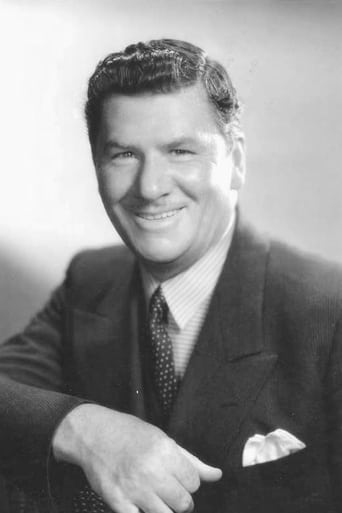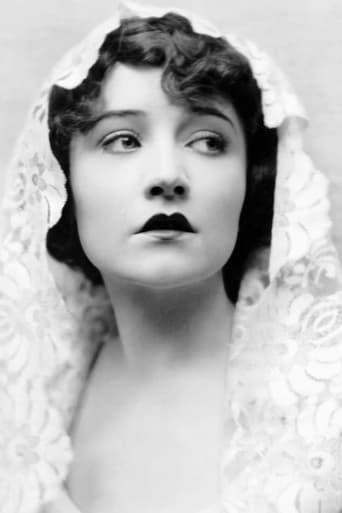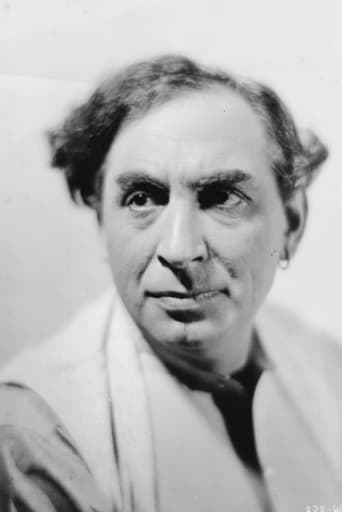Noutions
Good movie, but best of all time? Hardly . . .
Glucedee
It's hard to see any effort in the film. There's no comedy to speak of, no real drama and, worst of all.
Zlatica
One of the worst ways to make a cult movie is to set out to make a cult movie.
Logan
By the time the dramatic fireworks start popping off, each one feels earned.
judy t
This film is perfect. It's about 2 people meeting, falling into something like love, and deciding to spend their future together. It had a few more subtitles than needed, a common irritant with silents, but some of the dialogue cards actually - surprise - enhanced the viewing experience by highlighting Bill and Mae's basically decent characters.This is one of the 3 Von Sternberg silents reissued by Criterion. I like 'Underworld' a lot, but I'm head-over-heels with 'Docks', due primarily to George Bancroft. No one else could have played Bill as well. Not Beery, not McLaglen. This is an example of an actor and a role fitting like a glove. And the same goes for Betty Compson playing Mae, a gal who, to put it mildly, is down on her luck. Mutually attracted as they are, but each cautious, they circle around, taking the other's measure. As Mae says, "You ain't so bad, Bill." And she's spot on in summing him up.Bill is a hard-drinking, brawling big hunk of masculinity who's confident in who he is, his physical strength, and his chosen life. He's a no longer young man who's at peace with himself and his place in the world. He has a work ethic - "I've never missed a ship sailing in my life" - and pride in his job, back-breaking labor that will use him up before he's 40. When Bill says to Mae, "I never done a decent thing in my life", he looks like he means it when he says it, but we know differently.A few years earlier female hearts beat faster watching Valentino sweep Vilma Banky off her feet. But Valentino, wonderfully watchable as he is, is make believe, whereas Bancroft is the real thing. But how will Bill make a living after giving up his life at sea? That's not in the script, but because we care what happens to these 2, my guess is he and Mae will scrape together a few dollars somehow and open their own bar along the docks of New York.
kidboots
Initially it was very easy to forget you were watching a narrative film and to just imagine it was a documentary maker's homage to the seedier docklands of New York. Down in the ship's boiler room - George Bancroft and Clyde Cook didn't seem like actors, they actually looked like stokers, dreaming of going ashore. And the eerie silhouette of the girl on the pier - then the splash!! I really think that "The Docks of New York" is a triumph of von Sternberg's visual artistry. Mists and shadows, especially compelling was the scene when Bancroft carried the bedraggled Compson along the waterfront to her shabby room.Just as he had given Evelyn Brent's career a new lease of life, von Sternberg proceeded to do the same thing for Betty Compson. Although "The Docks of New York" was advertised as her comeback picture, according to Betty, she had never been away. In a chapter devoted to her in "From Hollywood" by DeWitt Bodeen, he chronicles her ups and downs of the twenties. She divorced her husband, director James Cruze, and was immediately besieged by creditors (to do with his bankruptcy). She then realised most of the major studios thought she was a has been but instead of taking it to heart, she went over to Chadwick, a poverty row studio and worked so hard she got back into shape and once again had the big studios bidding for her services. Another actor von Sternberg rescued was George Bancroft, who spent most of the 20s as a Western badman albeit with a hearty laugh. First casting him as the charismatic gangster in "Underworld" then as the burly stoker, Bill Roberts, in "The Docks of New York". Bancroft was larger than life!!!The story is simple, Roberts rescues a prostitute after she has thrown herself in the river. Initially hoping to paint the town red before departing the next morning, he takes a shine to Mae's vulnerableness and convinces her a good time is better than a watery grave. After carousing at the dockside tavern Bill gets carried away and proposes to Mae and after much coaxing she accepts - but she is serious as is the parson "Hymn Book Harry" (Gustav Von Seyffertitz) whose withering look upon those assembled tells you just what he thinks of them. Come the morning Bill is preparing to leave, treating the whole thing as a joke, but back on the ship......The music is wonderful with an orchestral score that has a real feel for the gritty reality of the docks - it also incorporates popular songs of the day "A Bird in a Gilded Cage", "The Sidewalks of New York" etc. I should have realised it was the brilliant Robert Israel, my favourite composer of silent film scores.Making just as much of a dazzling impression is Baclanova as a distinctly unglamorous waterside worker. She is married to Bill's brutish boss, but tells Mae "I was decent too - until I got married"!!!
Steffi_P
One of the less obvious differences between sound and silent pictures, is that whereas in a sound picture the director will set up a scene, prep the actors and then call action, in a silent the director could (and usually would) continue to direct even while the cameras were rolling. Of course it's hard to tell how much this difference affected the finished product in real terms. However, with a director like Joseph "von" Sternberg, who demanded a complete (and indeed tyrannical) control over every aspect of the image, the ability to carry on shouting at his cast and crew right through the take was probably a considerable bonus in fine-tuning his elaborate visual style.With Docks of New York being a late silent, it has more or less as much fluidity of movement and camera angle as your average sound flick. However there is an extreme complexity in the movement of a kind that you only really saw in Sternberg's silents. Take for example those lengthy dolly shots through the bar, with extras moving across the shot as the camera goes in or out. Those movements across the screen look haphazard, but they are carefully timed to complement the camera movement and give a rising tide of franticness. To arrange everyone so precisely there must have been almost as much activity behind the camera as in front of it. You could do a shot like that in a talkie, but it would require copious reheasing, and I don't think that's something they tended to bother with in the early sound era, what with the all the other obstacles they had to overcome. It's certainly true that Sternberg used to spend most of his set-up time sorting out the lighting schemes, rather than giving any detailed priming to his cast.Sternberg's layered patterns of movement not only add to the aesthetic quality of this picture, but they enhance its atmosphere. The barroom scenes in particular have a spectacularly chaotic feel to them. The fact that every edge of the room is filled by a mass of moving bodies makes it impossible to figure out the size and layout of the place. But for all his visual lavishness, Sternberg himself admitted to caring little about stories, and as a result the narrative gets a little lost amidst all the shadows. This is even given the fact that Docks of New York is overburdened by intertitles.Sternberg had also yet to fully develop his stylised and dappled lighting patterns that can be seen in his talkies. Here that's a good thing, because it means his camera shows the actors up a little better. And there are some fine performances here worth capturing. George Bancroft gives a superbly realist turn, looking every inch the rough but basically good-hearted stoker. Betty Compson is also nicely subtle, in a slow and measured performance with plenty of under-the-surface emoting. An honourable mention should go to Clyde Cook, who plays Bancroft's buddy Steve. Cook was an Australian slapstick comic, once the star of his own shorts but by this time doing supporting work in features. He is perhaps a little too clownish for the sombre tone of Docks of New York, but entertaining to watch and capable of a spot of straight acting when the occasion demands.The oevre of Herr Sternberg can generally be summed up as pretty to look at but dramatically unengaging. As a silent picture, where the director can put his all into the image without having to worry about the business of dialogue, Docks of New York is just that little bit prettier to look at. And yet as one lacking in a strong narrative drive it is also that little bit more dramatically unengaging. It's a shame, because this is potentially one of the most poignant tales he ever dealt with. Bancroft and Compson recognise this, and play it appropriately, but the director remains a hard-boiled cynic who knows a few camera tricks.
Igenlode Wordsmith
For me, this comes a close second to "Underworld" in Sternberg's films: the twists and turns of the melodramatic plot become ultimately a little too much for me to swallow (a twist too far?), and I found some of the camera devices simply distracting, but even so the film is more or less won by virtue of the impressive acting from all concerned. Betty Compson (who was soon to receive a well-deserved Oscar nomination for her role in the part-talkie "The Barker") stands out as the fragile, cynical girl who has "had too many good times" already but allows herself to believe in the possibility of redemption; Baclanova is memorable as the petty officer's deserted wife, while George Bancroft is a cheerful, callous but not unkindly Colossus of a stoker. The weary, sensitive features of Gustav von Seyffertitz, in a small role as the threadbare Bible-basher who ministers to this godless 'flock', also make a strong impression. The film is almost all atmosphere, but it is atmosphere well-done.




